Low Light, No Problem: These Are the Best Plants for Your Garden in the Shade
Updated May 12 2023, 10:27 a.m. ET
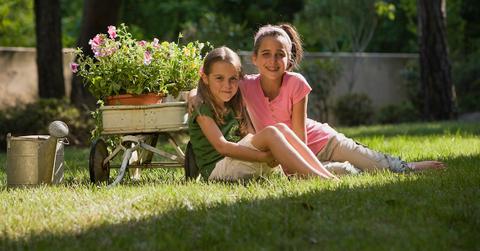
When it comes to improving your health — mentally and physically — the benefits of gardening are plentiful; not only is it a great hobby for the person doing the gardening, but it’s also a seemingly easy, and undeniably important, way to heal the planet.
For the most part, all you need is a little bit of knowledge, some patience, sunlight, space, soil, and seeds to get started on a garden of your own, regardless of if you want to start a vegetable garden or if you desire to plant flowers. For some of us, some of those resources — especially sunlight — can be a tricky part of the equation.
Luckily, there are plenty of plants that can not only grow, but thrive, in the shade. Check out what you can plant in order to reap the many benefits of gardening, regardless of the sun exposure where you sow.
What plants grow better in the shade than the sunlight:
When we learn the basics of photosynthesis, sunlight is an important part of the equation; for a refresher on your elementary school biology lessons, photosynthesis is the process by which plants use the sun to convert carbon dioxide and water into glucose and oxygen.
But, as Farmer Nick — a plant coach, urban gardener, and landscaper designer — tells Green Matters, “Just because you don’t have much light doesn’t mean you can’t have a garden.” He adds that in urban areas like cities, closely built buildings may limit access to direct sunlight, and as a result, many people opt to grow “shade gardens” that are better suited for some plants than others.
“Plants like hosta, bleeding heart, astilbe, heuchera, ferns, lobelia, and begonias are excellent choices that will thrive in a cool, damp, low-light environment,” he says. “But my personal favorite are columbine — many of which are native to the Northeast.”
Christina Albert, director of agriculture at Beach Plum Farms in Cape May, N.J., agrees, echoing some of Farmer Nick’s picks when speaking to Green Matters. “The best plants to grow in the shade include ferns, hostas, astilbes, heucheras, impatiens, coelus, and hydrangeas. Hydrageas are generally easy to grow and care for, and they can thrive in a variety of soil types and light conditions. They are also relatively low-maintenance and don’t require much frequent pruning.”
Full shade vs. partial shade plants: What’s the difference?
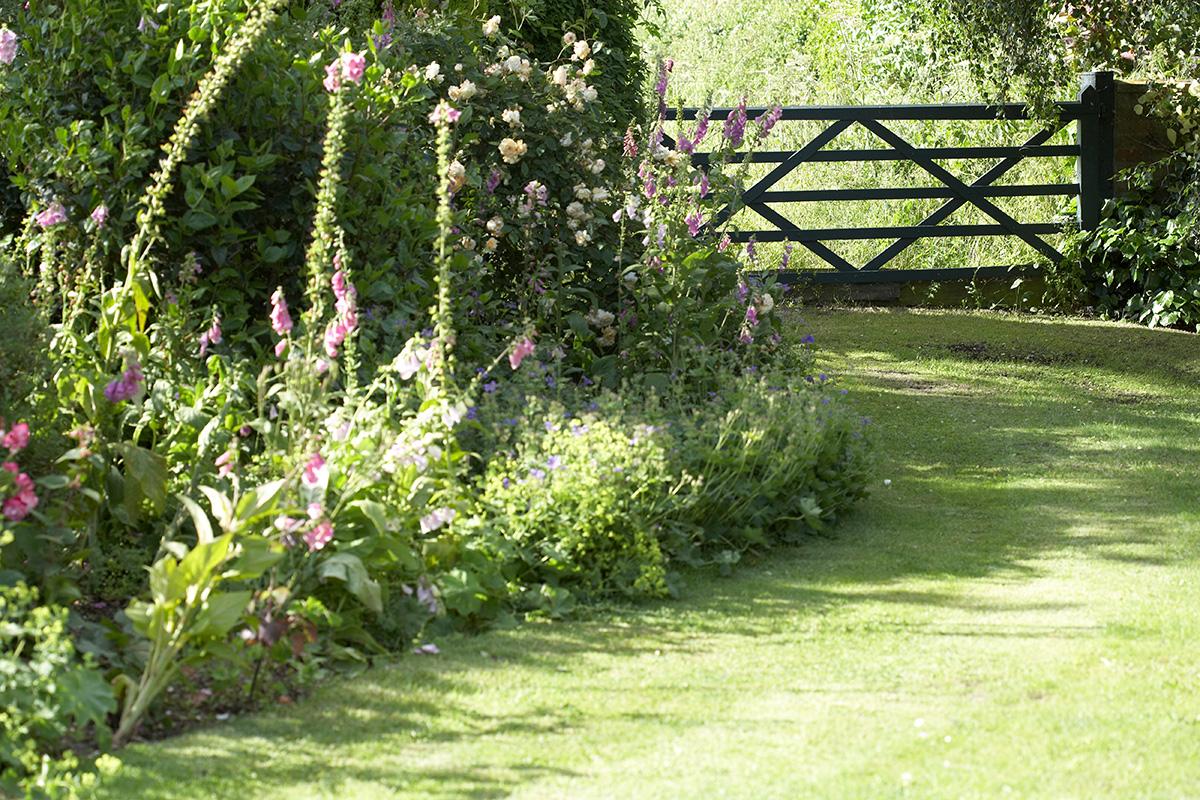
There are an abundance of factors that go into how much sun — or lack thereof — your plants get; it could be a matter of location, climate, or the landscape of the buildings surrounding your would-be garden. To help better understand how much light any given plant needs, there are four categories that amateur gardeners and professional farmers alike use to classify the degrees of sun: full sun, partial sun, partial shade, and full shade.
As the University of Florida’s Institute of Food and Agricultural Sciences points out, there is a bit of overlap between “partial sun” and “partial shade,” which can lead to some confusion, and knowing what kind of shade you have in your garden can help you better understand how to improve your garden.
“In general, full sun is at least six hours of unobstructered, direct sun … Partial sun and partial shade usually means [three to six] hours of sun/shade each day, preferably in the morning and early afternoon sun,” UF’s Institute of Food and Agricultural Science explains in a blog post. “Full shade is bright light but with little or no direct sun … Most people assume full shade means no light.”
Why do some plants require less light?
For many plants, full shade isn’t just a compromise, it’s a preference — but not one that happened overnight. “Many of these plants have adapted and evolved over thousands of years to grow in the understory beneath the canopy of trees,” Farmer Nick explains. “Growing up on the forest floor means that flight is often dappled or scarce, and these plants developed very fine leaves and, generally, smaller blooms.”
The cooler temperature created by the shade is also a crucial element for both the plants and the soil in which they grow. Albert adds, “Plants can conserve water and avoid excessive heat stress, which allows them to grow more efficiently. Shade can protect plants from harsh winds and extreme weather conditions.”
How to grow shade-loving plants:
| Name | How to Plant |
|---|---|
| Ferns | Ferns are another non-intimidating way to add greenery to your shaded areas — all you need to do is keep them saturated enough that they’re damp and avoid the sun. |
| Hostas (aka plantain lilies) | Hostas thrive in full shade and moist (but not soaked!), fertile soil; the low-maintenance favorites are best planted in the spring. Though they’re typically celebrated for their leaves, some lucky gardeners can also get scented, beautiful flowers in the summer. These easy-to-grow beauties are a popular choice for container gardens, too, Gardener’s World explains. |
| Astilbe (aka Fanal) | A popular perennial, your best bet for astible is planting in the spring or fall, and allowing partial shade with moist, well-drained soil. They can also do well with full shade, but you’ll see less flowers with less sun. |
| Coral bells (aka heucheras) | Beloved for their multicolored flowers, these easy-to-grow plants are deer- and rabbit-resistant. Coral bells prefer partial shade, and thrive with moist soil. The small, delicate flowers can even attract hummingbirds to your yard. |
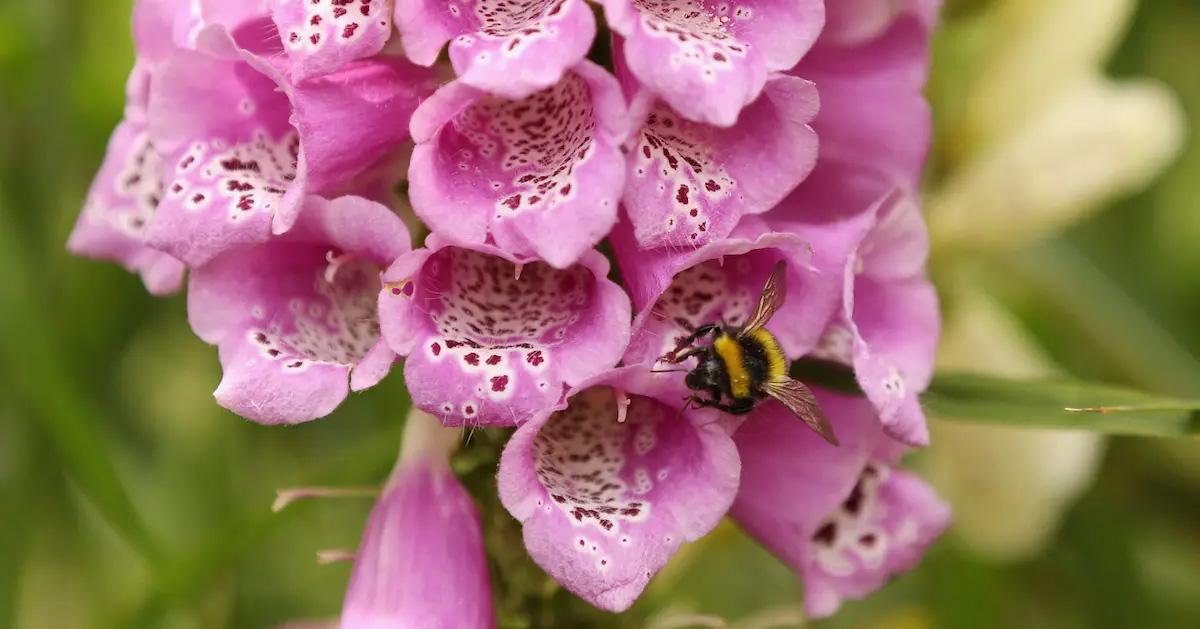
Fox Glove, pictured, can help bring pollinators like bees to your shade garden.
| Name | How to Plant |
|---|---|
| Foxglove (aka digitalis) | Foxgloves are originally biennials, meaning their lifecycle occurs over the span of two years; these brightly colored flowers prefer partial shade and free-draining soil, per Homes & Gardens. These beauties are generally easy to care for and can help bring bumblebees to your yard, but pet owners should note that foxgloves is known to be toxic to dogs. |
| Bleeding hearts | Bleeding hearts are an old-fashioned favorite of home gardeners; your plants will thrive — sometimes, as large as 3 to 6 feet — with damp, rich soil and partial shade. Though some species lose their leaves as they enter a summer dormancy, some can bloom well into the autumn. |
| Hydrangeas | These evergreen plants can be seen blooming in the spring and summer, and lay dormant in the winter; to help them thrive, plant hydrangeas in fertile soil that gets plenty of moisture and allow partial shade (they may not bloom in full shade). In order to get annual blooms, trimming hydrangeas is essential to ensure new growth the following year. |
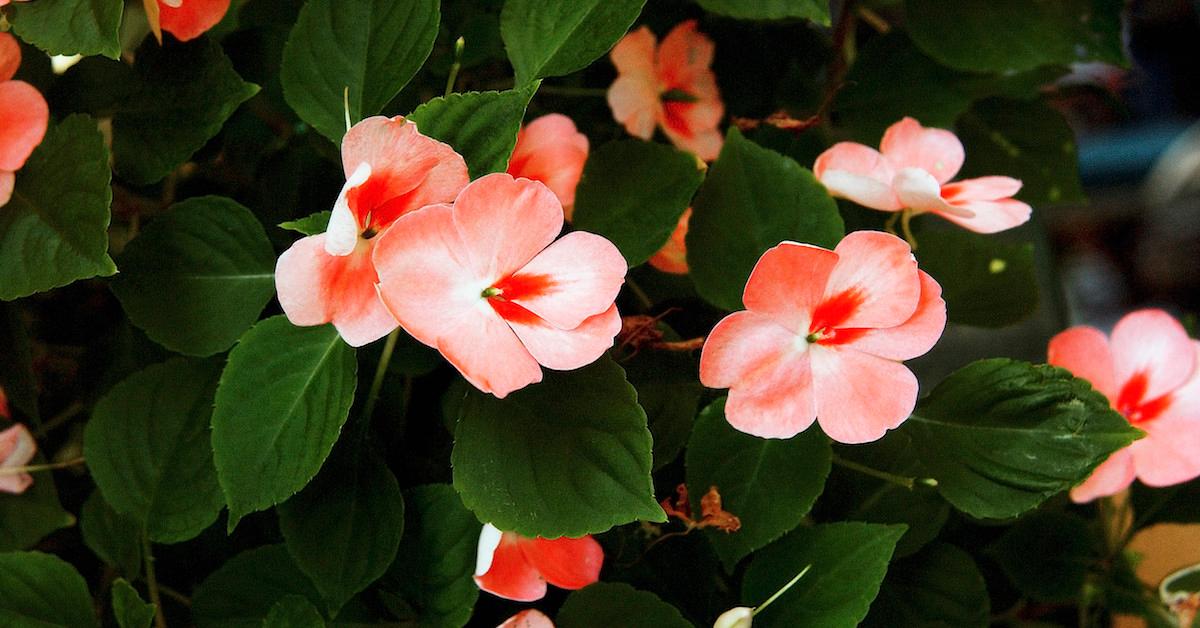
Impatiens are a popular option for shade gardeners.
| Name | How to Grow |
|---|---|
| Impatiens | Impatiens are a popular pick for their “bloom power,” and variety of colors, per Better Homes & Gardens. A staple of a shade garden, these brightly colored flowers thrive even with full shade, and require regular watering in rich, well-drained soil. |
| Coleus | Beloved for its bright, year-round foliage, Coleus is a beginner-friendly option to add constant color to your shade garden. Coleus needs well-draining soil, as you increase the chance of root rot if oversoiled. Of the more than 600 varieties, The Old Farmer’s Almanac recommends the Brilliancy, Fishnet Stockings, Mardi Gras, and Japanese Giant varieties for shade gardens. |
| Begonias | Begonias can do well in countless shaded situations, and are a perfect way to add some color to your shade garden or under a covered porch. American Meadows recommends giving your plants a head start by starting them indoors before moving them to an area of full shade and water every few days (or more during a particularly dry run in your area). |
| Lobelia | Lobelia is a mainstay for landscaping because of its prolific blooms; lobelia — which can blossom in a variety of colors — can thrive in partial shade and top plant brand Proven Winners encourages planting in rich, slightly acidic soil and watering regularly to keep the soil “evenly moist but not soggy.” |
| Spurge (aka Euphorbia) | These beautiful, shade-loving plants come in a variety of colors that often change with the seasons. There are some 75,000 distinct species of spurge and though not all of them are fond of the shade, the burgundy-colored spurge is a shade fan that also happens to be a perennial by way of its ability to self-sow, according to Gardener's Supply Company. |
| Lungwort (aka pulmonaria) | Also known as pulmonaria, these evergreen, perennial plants are native to Europe and Asia, but have thrived in shady North American gardens; these plants prefer partial shade and moist, but well-draining soil and as the Iowa State University’s Extension and Outreach puts it, lungwort are “easy to grow, low maintenance, long-lived perennials.” |
| Columbine (aka Granny’s bonnet and crowfoot) | A favorite of Farmer Nick, these brightly colored flowers are known to attract bumblebees and hummingbirds to your land. In warmer areas, columbines thrive in partial shade, Gardener’s Path explains, but can benefit from additional sunlight in cooler climates. If starting outdoors, seeds should be planted in late summer and should be watered evenly, without oversaturating. |
How to optimize your shade garden:
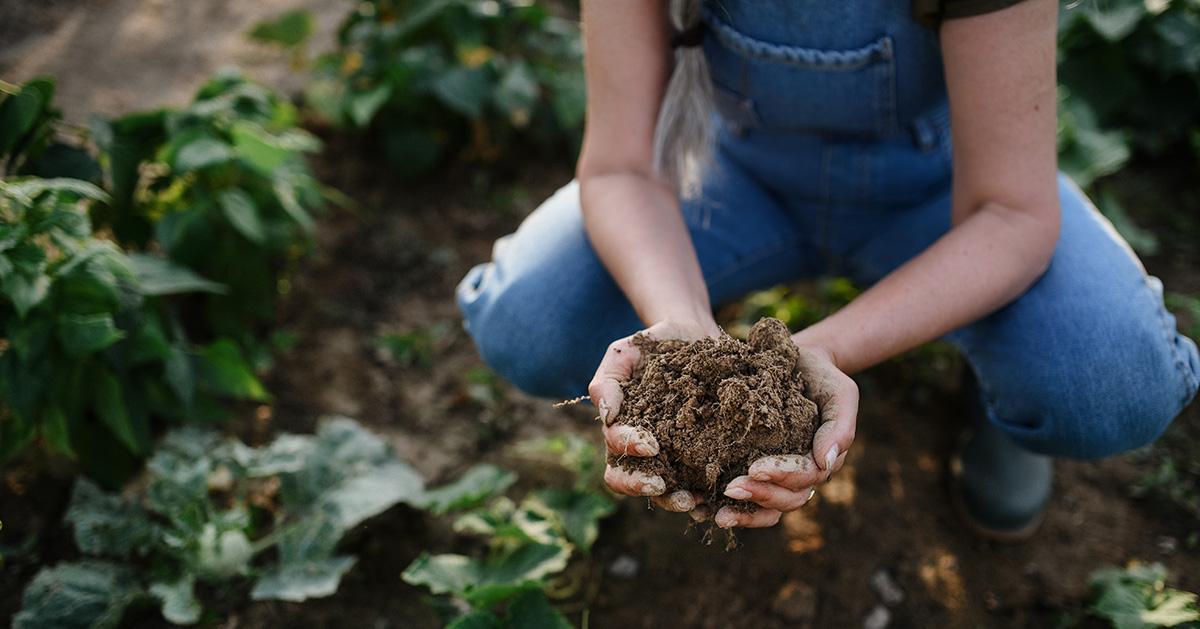
Improving the soil is an easy way to improve your shade garden.
Without knowing better, you may not realize that your garden with plenty of shade can be a blessing in disguise; not only are shaded areas cooler, allowing the soil to retain moisture longer, but it also means that you’re likely surrounded by beautiful, high trees in your yard.
If you’re determined to make a more sun-loving plant work in your shaded garden, you may need to get a little creative — and prepare to put in the elbow grease. “Use reflective surfaces,” Albert says. “Alternatively, you can prune nearby trees or shrubs to allow more light to penetrate the area.”
You can also improve your soil by adding compost to your garden; introducing finished compost to your garden has countless benefits — including bettering the health of your soil by adding organic matter, aiding in moisture and nutrient retention, and sequestering carbon in the soil.
Fortunately, if you’re in an urban area or are incredibly limited in your gardening space (or if you’re determined to grow something that requires full sun), you still have options. Especially if you — understandably — don’t want to prune any of your trees, as they’re important for wildlife, help us all to be energy efficient, and, according to the Arbor Day Foundation, can even increase your home’s value.
“Unless you are planning to trim your tree canopy, it can be difficult to create light in your garden. This is especially challenging for edible fruits and veggies, which typically require more life than most [plants] to produce good yields,” Farmer Nick tells Green Matters. “To combat this, you can get creative and start growing indoors with grow lights instead. Full spectrum LED grow lights are super powerful and capable of growing almost any crop indoors, and if you use an automated, self-watering, and self-fertilizing hydroponic system like the Lettuce Grow Farmstand Nook, it becomes even easier. This is even more important in the cool winter months when light is even less pervasive, and it is such a joy to be able to harvest fresh veggies and herbs all year long.”
Tips for starting a shade garden:
When starting a shade garden, it’s important to know two things — what kind of shade or light your space actually gets and a desired plants “preferred environment,” as Farmer Nick puts it. Albert also suggests planting in containers or raised beds and using light-colored hardscaping materials.
Gardening in all forms can be a labor of love, and that’s especially true when it comes to gardening in the shade, according to Albert.
“You may need to adjust your expectations and be prepared to invest more time and effort in.”